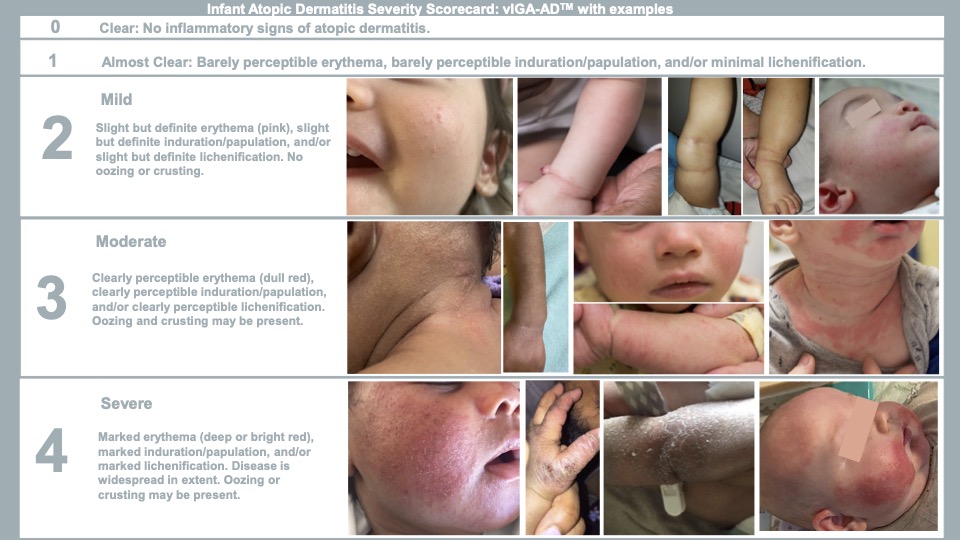Allergy, Immunology and Rheumatology
Allergy, Immunology, and Rheumatology
380 - Developing an Infant Atopic Dermatitis Scorecard for Pediatric Clinicians
Publication Number: 380.301
- WS
Waheeda Samady, MD, MSCI (she/her/hers)
Associate Professor, Attending Physician Pediatric Hospital Medicine
Northwestern University The Feinberg School of Medicine
Chicago, Illinois, United States
Presenting Author(s)
Background:
The accurate diagnosis of infant atopic dermatitis (AD) and categorization of AD severity is necessary for the new early peanut introduction guideline risk assessment. AD has a variable presentation especially in young infants and different skin tones. Existing tools have primarily been developed for older children and not for clinical use for infants. To develop an infant AD scorecard with a focus on diverse skin tones to assist pediatric clinicians with AD diagnosis and associated food allergy risk assessments.
Objective:
Design/Methods:
Parents of infants with diagnosed AD were contacted and consented to provide high-resolution photographs of their infant’s AD lesions. Two dermatologists reviewed all images and determined AD severity using the Validated Investigator Global Assessment for Atopic Dermatitis (vIGA-AD). An instructional video about AD and the use of our scorecard was created and presented to pediatric clinicians.
Results:
Photographs of 13 infants were obtained: 6 infants were photographed by research staff and 7 parents provided images using the same standardized protocol. Two pediatric dermatologists evaluated 58 images, with 84% agreement on first-pass severity categorization. 14 images were selected representing 2 White, 2 Black, 1 mixed race, and 2 Hispanic/LatinX infants. Images were used to develop the final scorecard which included 5 mild, 5 moderate, and 4 severe cases of AD. Overall, 189 pediatricians completed an educational module on AD categorization and using the vIGA-AD scorecard. Of initial feedback surveys (N=14), 64.3% reported the training was “very effective.” Observation of utilization and effectiveness of the scorecard and training is ongoing.
Conclusion(s): The development of an infant AD scorecard can support and improve the assessment of AD and allergy risk status among pediatricians.
